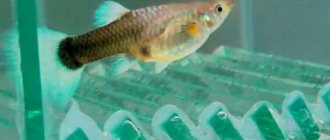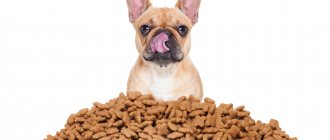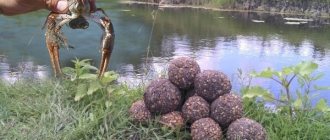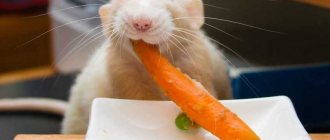If you are preparing to buy a husky puppy, you are probably wondering: what to feed him? The problem is that it is very difficult for novice owners to make a decision, because there are hundreds of manufacturers of ready-made food on the market. You also need to choose food on which your dog’s healthy functioning will depend. In this article you will learn about all the intricacies of feeding a husky, find out when and how to do it correctly and, ultimately, get rid of this problem.
This wonderful breed, bred from aboriginal dogs, was intended for riding, so its distinctive features are speed, great performance, strength and endurance. However, due to their loyalty and friendliness, today they like to keep huskies in apartments, as a pet and companion. And since these dogs differ in many ways from other breeds, special attention must be paid to their feeding.
Nutrition
Nutrition plays a big role in the growth and development of a puppy . In childhood, the formation of the musculoskeletal system and the formation of muscles occurs, and specialized feeding affects:
- dental condition;
- gums;
- joints;
- improved digestion;
- maintaining immunity;
- work of the central nervous system.
Food must be nutritious and contain all the necessary vitamins, minerals, micro and macroelements.
Before you start feeding the animal, you must decide on the method of feeding it. There are 2 types:
- natural;
- ready-made (purchased) food.
Natural diet
Every person wants to see their dog healthy, active and cheerful, and these factors largely depend on proper nutrition. Consequently, most people are confident in the absolute usefulness of natural food, because they can track what exactly goes into their dog’s body, but they do not trust store-bought food. However, this approach is erroneous, since this diet may not always be balanced.
You should know that the metabolism of the Siberian husky, like that of wolves, is protein-fat, and not protein-carbohydrate.
The advantages of natural food include:
- has no harmful additives;
- contains a sufficient amount of fiber and protein;
- the choice and quality of products are intended for the owner.
Minuses:
- takes a significant amount of time;
- difficulties with switching to another food;
- unbalanced diet.
To ensure a balanced diet, follow the percentage ratio.
General rules
- 50 – 70% of all food is meat.
- 10 – 20% of all food is cereals.
- 20 - 30% of all food is vegetables.
- 10–20% of all food is dairy products.
Main Products
- Meat . Low-fat varieties are best - chicken, turkey, beef, venison. But pork and lamb should be avoided. Boiled meat with cartilage and films will bring great benefits to the dog’s body.
- Offal . Sometimes they can be an excellent substitute for meat, or add variety to the protein diet. These are the scar, liver, heart, lung, trachea, spleen and kidneys.
- Fish . Red sea fish (trout, char, salmon, etc.) are suitable as an additional source of protein and essential amino acids. The benefits of fish cannot be overestimated, because its protein is easily digestible, and the product itself contains a large amount of vitamins (A, B1, B2, B3, B6, B9, B12, C, D, E) and minerals (potassium, phosphorus, sulfur, chlorine, sodium, magnesium, calcium, iodine, zinc, iron, fluorine). Thanks to this composition, the dog’s thyroid function is normalized, metabolic processes, memory and attention are improved, which is important when training and teaching commands. Essential amino acids contained in it, such as arginine, tryptophan, methionine, leucine, valine, lysine, threonine, have an antioxidant effect, and the presence of hyaluronic acid and collagen is excellent for the health of the pet’s ligaments and cartilage.
- Eggs . It is allowed to give both quail (2 - 3 pieces) and chicken (boiled or raw).
- Vegetables, boiled, or with the addition of vegetable oil . Necessary micro and macroelements are found in zucchini, pumpkin, cabbage, cucumbers, carrots and beans.
- Fruits . Many pets cannot live without fruit. Pamper them with small portions of banana, apple, pear and tangerine slices.
- Fermented milk products . The basis for the musculoskeletal system is low-fat fermented milk products - cottage cheese, kefir. However, they must be absolutely fresh.
- Cereals . To prepare porridge, you need to use only three types of cereals: oatmeal, rice and buckwheat. They contain fiber and dietary fiber, which affect the smooth functioning of the intestines.
“Remember, obesity is a dangerous disease that has critical consequences. Periodically feel your dog’s ribs and monitor his weight.”
Nutritional supplements
After consulting with your veterinarian in advance, you can add the following supplements::
- Brewer's yeast;
- bone flour;
- fish fat;
- calcium tablets.
What and how to feed a husky puppy at 2 months?
photo from the site: www.happy-giraffe.ru
And again, the main thing is to avoid a bias towards fats and give the body everything it needs in the right proportions. A balanced diet is the key to harmonious development and growth, as well as the health of your dog, not complicated by problems such as rickets, food allergies, diarrhea, etc.
The list of prohibited products still includes:
- table waste (everything fatty, fried, sweet);
- raisins and grapes;
- lamb and pork.
Do not forget that huskies need iodine - it is better not in synthetic additives in food, but in its natural form - algae or sea fish.
For a two-month-old puppy, you can create the following menu:
- breakfast - light cottage cheese, a fruit mixture of one carrot and mashed apple;
- for lunch you can give meat (venison, beef, chicken, turkey) or boiled fish with pre-selected ridge and bones;
- For an afternoon snack, offer your baby fermented milk - kefir or fermented baked milk;
- The ideal dish for dinner would be porridge with added meat.
If you do not want to get a sick pet, do not overfeed the puppy. For those who like to pamper their dog with treats, we remind you that the ideal option for a husky breed with a sweet tooth would be a piece of banana or dried apricots, but chocolates and cakes are cancelled.
Ready food
Store-bought food consists of canned food and dry granules.
Advantages of ready-made food:
- quick cooking;
- contains all the necessary substances;
- ease of use and transportation;
- developed menu.
Disadvantages include::
- lack of moisture;
- difficulties in selection;
- expensive;
- presence of preservatives;
- inability to provide natural products.
Attention! It is strictly forbidden to mix natural food with prepared food! These are too different types of food.
Can I feed dry food?
As mentioned above, the choice of food is yours, but it also depends on the dog. Watch your husky and see what he likes to eat more - dry food or home-made natural products. There are individuals with individual intolerance to one of the feeding methods . Some cannot eat ready-made food - they immediately begin to have digestive problems and diarrhea, while others, on the contrary, have a similar reaction to natural food.
Make sure there is fresh water in the bowl! Especially when feeding dry food, the dog should always have enough drinking water.
Pet stores will provide you with a wide range of dry food manufacturers. In this case, the price directly depends on the quality.
Buy premium and super-premium food:
- Particularly inexpensive of them, and corresponding to average good quality, are Pro Plan, Royal Canin.
- Higher level – Eukanuba, Hills, Acana, Orijen.
At what age is it better to start and what is the best age?
Let's figure out what to feed puppies 1 month or older. In any food, regardless of the brand, there are age ranges :
- For puppies from 3 weeks to 2 months and pregnant bitches – STARTER.
- For puppies from 2 to 10 months – PUPPY.
- For dogs from 8 months to 2 years – JUNIOR.
- For dogs from 1 to 6 years old – ADULT.
- For dogs over 6 years old - food with the wording “for older dogs”.
Nuances of feeding in the summer
In the morning the pet is offered less calorie food, in the evening it receives the main food. The menu for the week is calculated in advance in such a way as to relieve the digestive system a little in the middle of the week, and by the end of the week energy-intensive and protein-rich foods are added to the diet. Before long walks, training, or exhibitions, the dog is fed light food; in the evening on the day of the event, a high-protein food is given.
In summer, the portion is reduced compared to winter, since heat loss is reduced. It is recommended to give preference to easily digestible foods with sufficient vitamins. Optimal menu:
- 40% – raw beef;
- 10% – boiled offal;
- 20% – rice porridge;
- 20% – dairy products;
- 10% – boiled vegetables.
The animal is given vitamin complexes for joints and bones all year round. It is prohibited to combine natural and dry food in a husky’s diet. This can affect the functioning of the gastrointestinal tract and lead to illness.
The daily food allowance is written on the back of the package; owners only need to adhere to the amount specified by the manufacturer. To calculate the morning and daily portions, the norm is divided by two. What does your pet prefer? Share your opinion in the comments!
Diet by month
- Up to 2 months – 6 times a day.
- From 2 months – 4-5 times a day.
- From 4 months up to six months – 3 times a day.
- From six months to one year – 2-3 times a day.
- From a year - 1-2 times a day.
Sample menu for a day at 2 months
- 8.00 – 1 chicken egg or 2 quail eggs.
- 11.00 – 100 g of cottage cheese.
- 15.00 - buckwheat porridge.
- 18.00 – 150-200 g of meat or fish.
- 20.00 – vegetable salad in vegetable oil.
- 22.00 – milk or yogurt.
For dry food, you should use a measuring cup and calculate the dosage according to the age and size of your dog. Also study the information on the food packaging and listen to the breeder’s recommendations.
Remember, the volume of dry food in the dog’s stomach increases at least twice.
Feeding Siberian Husky puppies
From the moment the puppies are born until the end of the suckling period, especially in the first two weeks, mother's milk is enough for babies, so during this period breeders should pay special attention to the caloric content and nutritional value of the diet of the lactating bitch.
Feeding babies begin at 2-3 weeks. In the event that there is not enough milk, feeding the puppies with milk mixtures begins at 7-10 days. How often should you feed a husky puppy?
Starting from 1.5-2 months, babies are fed 5-6 times a day, from the 3rd to 4th month - 4-5, from 5th to 6th - 4 times and starting from the 7th month, puppies gradually switch to a three-times-a-day diet, gradually increasing the volume of portions. You can switch to 2 meals a day at the age of 8-10 months. When compiling a diet, it is necessary to take into account the age, general health, level of activity and characteristics of the digestive system of representatives of this breed.
The diet of a Siberian Husky should be balanced, high quality and nutritious. It is recommended to adhere to a certain diet. Dogs that eat food at the same time have better absorption of nutrients and are less likely to experience gastrointestinal disorders. You should not feed the puppies between meals, much less follow their lead if the baby is reluctant to eat his food, but is not at all averse to trying the delicacies from your table.
Feeding Siberian Husky puppies
One of the most important questions that interests all Husky owners without exception is what to feed the puppy and what should form the basis of the diet? Breeders will best answer this question, so don’t be lazy to ask them what kind of diet your pet is used to. Particular attention should be paid to the diet in the first year of a dog’s life, since during this period the formation of bones and muscles occurs.
In the first days after acquisition, the puppy is fed the same products that he received from the breeders. You need to move from one type of food to another and introduce new foods gradually! When changing the diet, it is necessary to monitor the dog's condition, as some foods can cause allergic reactions, which manifest themselves in the form of a rash on the tummy or discharge from the eyes and nose.
Siberian Husky puppies can be fed high-quality ready-made dry food for medium-breed, premium or elite-class puppies, or natural food, which should be fresh, varied and balanced. Until 9 months of age, Huskies should not be given a combined diet (ready-made food + natural food), so it is better to immediately decide on the type of feeding.
Feeding with prepared food
Ready-made food is fully balanced with all nutritional components necessary for the normal growth and development of puppies and is presented in the form of dry granules or canned liquid food. It is best to choose puppy food labeled “natural,” “holistic,” or “human-grade.” Preference should be given to foods whose protein sources are fish, chicken, beef, and lamb. That is, the food contains several types of animal proteins (fish + poultry + meat), which is especially important if the diet does not include raw meat.
Puppies need easily digestible food, rich in proteins and fats, since the metabolism of dogs of this breed is protein-fat. Up to 7-9 months, dry food granules are soaked in warm water, kefir, milk or meat broth. Dry food should not contain soy, flavorings, stabilizers or dyes. You should not constantly change the brand of dry food or mix food from different manufacturers. It is important to adhere to the specified amount of food on the packaging and always ensure that your pet has access to drinking water.
Natural nutrition
The basis of the diet of Siberian Husky puppies should be meat products - veal, beef, poultry, rabbit. Up to 3 months, babies are given boiled meat in small portions. From 3 months, raw meat is gradually introduced. By-products are allowed to be introduced into the diet from 5 months. You can give trimmings, spleen, tongue, veal liver, chicken liver, chicken gizzards, tripe.
As for cereals, boil semolina, oatmeal, buckwheat or rice cereals, which should be well cooked in milk or broth. It is best to cook several types of cereals. Boiled, finely chopped or grated boiled vegetables, fresh herbs (dill, nettle leaves, lettuce, parsley, celery) and a spoonful of vegetable oil are added to the porridge. Give one raw or boiled egg twice a week.
Approximately 30% of the total diet should be fermented milk products. Be sure to give calcined cottage cheese, skim milk, whey, kefir, sour cream, yoghurts without any food additives.
A few recommendations
You should not give your puppy forbidden treats in the form of spicy, smoked, or sweet foods between meals.
Sugar has a negative effect on teeth and leads to metabolic problems. Do not give bones to babies under 6 months of age, as they clog the stomach, cause constipation and can damage the mucous membrane of the digestive organs. You should not overfeed puppies, as overfeeding leads to stretching of the stomach walls, increasing the load on the liver and kidneys. It is best to feed babies from a special stand with a height-adjustable tripod for bowls.
Which is correct?
How many times a day?
When puppies reach 14 days of age, they begin to introduce additional complementary foods - 1-2 times a day:
- Dry granules are pre-soaked with warm water in a ratio of 1:2.
- Let them sit for about 20 minutes, the granules should swell and become soft. If necessary, you can crush them with a spoon and turn them into a paste-like mixture.
When babies turn one month old, they switch to 6 meals a day.
Daily norm
The daily feed intake depends on weight and age . See the packaging of your food for information.
How to prevent overfeeding?
Overfeeding is very dangerous, fraught with the appearance of a hernia and intestinal blockage. Monitor your pet's stool regularly and feel its tummy. Strictly adhere to feeding standards.
What can you do from porridge?
- Meat porridge (2 servings) . For 500 g of beef tenderloin, pour 1/3 cup of cereal (oatmeal, buckwheat or rice) with water and add carrots and cabbage. Bring to readiness.
- Porridge with chicken . You will need 1 kg of chicken thighs, 1/2 cup of rice, chopped onion, bay leaf. Pour water over the meat, bring to a boil, then add the rest of the ingredients. Cook until the rice is completely cooked.
- Ordinary cereal porridge . Just pour the hot broth over the flakes (buckwheat or oatmeal). 1 tsp will improve the dish. butter.
Should I give vegetables?
Raw and boiled vegetables should not be given . They are boiled - sliced various vegetables are poured with boiling water for several minutes. Don't forget that steaming is also very suitable. Steamed food is good for digestion, and when choosing this method of heat treatment, it retains a maximum of minerals and vitamins. Only fresh tomatoes and cucumbers can be given raw.
Should I give milk?
From the 20th day you can give the puppy milk, use cow or goat milk. There are times when it disappears in a nursing bitch, then add a fresh chicken egg to the milk of your choice, at the rate of 1 pc. by 0.5 liters.
After 3 months, you can safely switch to cottage cheese and fermented milk products.
How to feed puppies
Newborn puppies grow up, and after a couple of weeks they need to start feeding. Although the mother will feed them milk until about one and a half months, you should start introducing the dogs to adult food much earlier.
Complementary feeding should begin at 14 days of age. By this moment, the Puppies eyes and ears are already opening, the babies are quite active. The introduction of new foods should begin with regular cow's milk. To make it more nutritious, you can add raw egg yolk per liter of milk. Feeding should be done immediately from a bowl, not from a nipple.
The puppies should be picked up one at a time and their faces lightly dipped into a bowl of milk. A small bowl or saucer is suitable as a utensil. The most convenient way to feed the baby is to sit him on your lap and hold the bowl with one hand and the baby with the other. Just put a towel on your lap. But this procedure can also be carried out on the floor. Of course, most of the milk will be spilled, but puppies very quickly understand what is required of them.
After 3-4 days, you can start feeding the babies porridge. There's plenty to choose from. Many breeders cook semolina porridge with milk. There are also those who feed Puppies with instant baby cereals. This is also very convenient and kids usually like it. To diversify your diet, you can grind buckwheat, rice, oatmeal in a coffee grinder yourself, or grind ready-made porridge with a blender. However, now in pet stores, along with dry bitch milk, you can also find special cereals for feeding Puppies . True, they are not cheap, and you can’t find them in every city.
From day 21, babies’ bodies are ready to digest meat. And you don’t need to boil anything. for the Puppies . You can do it in several ways. Scrape frozen m with a knife
Source
What to feed a husky puppy so that it grows up healthy?
There are many features in keeping Husky dogs. In particular, a husky's diet should contain a lot of protein and fat. Dogs of this breed can be fed both home-cooked food and store-bought food.
Ready-made food for huskies
In the first months of life, Husky puppies should be fed according to a special schedule. So, a small dog needs to be fed five times a day, and after reaching the age of two months, food intake is reduced to three times daily. After six months, the puppy can be fed only twice a day.
A husky's breakfast should consist of low-fat fermented milk products. To grow the skeleton and strengthen bone tissue, once a week give your puppy one or two quail eggs, raw or boiled.
If you don’t know exactly what to feed your husky puppy, then buy special food in the store - such food will not harm the dog. But from time to time, huskies need natural food, especially fish and vegetables.
Please note that the food from the store is premium: such food is well balanced and contains many vitamins and minerals. The composition of the feed must necessarily include meat or flour, and it is desirable that their share be the largest of the total mass. For small huskies, food containing vegetable protein, soy, dyes and corn is harmful.
Natural food for huskies
The introduction of fish into your pet's diet should begin after a week of feeding the puppies only rice porridge. After the puppies get used to rice, boil a piece of lean fish and put it in the porridge. Increase the proportion of fish in the dog’s diet every day, so that on the fourth day the amount of fish is about a third of the total food.
After the dogs get used to fish, you should start feeding your husky puppies vegetables. Getting used to vegetables should only begin after you
List of prohibited products
- Fish, tubular bones.
- Ground meat.
- Pork.
- Spices, spices, seasonings.
- Legumes.
- Bread and other flour products.
- Smoked meats.
- Salt.
- Pickled, spicy food.
- Roast.
- Chocolate, sugar, sweets, candy.
- Raisin.
- Grape.
- Apricots.
- Potato.
- Honey.
- Nutmeg.
- Alcohol.
- Coffee.
The arrival of a Siberian Husky puppy in your home is a wonderful event. For your pet to be active and healthy, it needs proper care and nutrition. Using this information, you will not have problems with your puppy's nutrition, and your pet will be happy and cheerful for many years.
What to feed a husky puppy at 3 months
At this age, it is necessary to slowly prepare the growing half-wolf for four meals a day. Don't forget: a decrease in the number of feedings is accompanied by an increase in portions.
For three-month-old huskies, the diet is still the same: only lean meat and fish, no sweets, no fatty or fried food from the table in the menu, mandatory inclusion of calcium-rich cottage cheese, vegetables and grains in the diet. You can offer your pet this dish:
Husky recipe
Porridge with chicken - for four you will need 1 kg of thighs, boiled until half cooked (before blood comes out when pierced with a knife). Add rice and carrots, grated on a coarse grater, to the chicken and cook until the rice is cooked.











